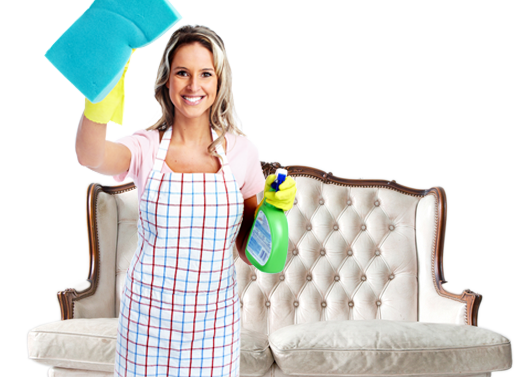Achieving Freshness: Dismissing Damp Smell Challenges
Posted on 14/08/2025
Achieving Freshness: Dismissing Damp Smell Challenges
If you've ever walked into a room and felt overpowered by a musty scent, you know how challenging it can be to achieve true freshness in your living spaces. Damp smells--often described as earthy, moldy, or stale--can be persistent and hard to eliminate. Whether it's in your basement, bathroom, wardrobe, or even your car, these unpleasant odors signal an underlying issue: excess moisture. In this comprehensive article, you'll learn how to overcome damp smell challenges, restore your home's aura, and maintain an environment that's not only odor-free but also healthy and inviting.

Understanding the Origin of Damp Smells
Damp odors aren't just annoying--they can also indicate potential health and structural problems. Understanding where these odors originate is the first step to achieving lasting freshness.
Sources of Musty and Damp Odors
- Moisture Intrusion: Leaks from roofs, walls, windows, or plumbing can introduce water that lingers and breeds musty smells.
- Condensation: Poor insulation and temperature differences can cause condensation on surfaces, especially windows and pipes, fostering dampness.
- Poor Ventilation: Spaces with inadequate airflow--like basements, attics, and bathrooms--trap humidity and odors.
- Mold and Mildew Growth: These fungi thrive in damp environments and produce volatile compounds responsible for that unmistakable musty scent.
- Absorbent Materials: Items like carpets, upholstered furniture, and curtains can absorb moisture and odors over time.
If left untreated, persistent dampness can lead to long-term odor problems, damage to household items, and even pose health risks due to mold spores.
Why It's Essential to Banish Damp Smells
Many people attempt to mask bad odors with sprays or air fresheners, but unless you address the root cause, the dampness smells will return. Fresh-smelling spaces are more than a matter of comfort--they influence your well-being and the longevity of your home.
- Health Impact: Musty environments indicate mold, which can trigger allergies, respiratory issues, and worsen asthma.
- Property Value: Persistent damp issues can lower your home's value and deter potential buyers or renters.
- Quality of Life: Living in a fresh, clean-smelling space boosts mood, productivity, and relaxation.
Identifying the Root of Dampness Odors
Locating the precise source of dampness smell challenges can be tricky. Begin by evaluating areas that are prone to excess moisture and mold growth. Here's a simple checklist:
- Check walls and ceilings for water stains, discoloration, or peeling paint.
- Inspect hidden spots like behind furniture, under carpets, and inside closets for mold.
- Use your nose: the most intense odor is often closest to the source.
- Test humidity: Use a hygrometer to measure relative humidity (ideally 40-60% indoors).
- Look for leaks around plumbing fixtures, windows, and the foundation.
Effective Strategies to Dismiss Damp Smells
Banish damp, musty odors by targeting both their cause and their lingering effects. Here's a step-by-step guide for achieving--and maintaining--lasting freshness in your home:
1. Remove the Source of Moisture
- Repair Leaks: Promptly fix any leaks in roofs, pipes, windows, and walls.
- Improve Drainage: Ensure gutters, downspouts, and landscaping direct water away from your home's foundation.
- Seal Cracks: Fill any foundation or wall cracks to block water entry.
2. Increase Ventilation
- Open windows and doors regularly to let fresh air circulate.
- Install or upgrade exhaust fans in bathrooms and kitchens.
- Consider a whole-house ventilation system if you live in a high-humidity climate.
3. Control Indoor Humidity
- Use a dehumidifier in damp-prone areas like basements or bathrooms.
- Monitor humidity and keep it below 60% to prevent mold and mustiness.
- Air conditioning can also help reduce indoor moisture.
4. Deep Clean and Sanitize
- Wash affected textiles (curtains, carpets, blankets) with antibacterial detergent and dry thoroughly.
- Scrub hard surfaces with a mixture of water and vinegar or baking soda to kill mold and mildew.
- Use a HEPA-filter vacuum to capture dust, spores, and fine particles.
- Dispose of heavily contaminated items if cleaning does not eliminate the odor.
5. Absorb and Neutralize Odors
- Use activated charcoal, baking soda, or silica gel packs to absorb residual odors in rooms and closets.
- Place bowls of vinegar or coffee grounds in musty rooms to neutralize bad smells.
- Try commercial odor eliminators designed specifically for mold and mildew.
Prevention: Maintaining Freshness Over Time
Achieving a fresh-smelling, healthy environment is only half the battle--you need to take steps to prevent damp odors from returning:
Routine Maintenance
- Regularly inspect your home for leaks or signs of moisture buildup.
- Keep gutters and downspouts free of debris to prevent water infiltration.
- Check caulking and weatherstripping around windows and doors.
- Replace filters in HVAC systems to ensure optimal airflow and efficiency.
Good Habits
- Hang wet towels and clothing in well-ventilated areas, not in closed rooms or closets.
- Use lids or covers on aquariums, kettles, and other sources of moisture indoors.
- Store seasonal clothing and linens in airtight containers with moisture absorbers.
Environmental Controls
- Install dehumidifiers with automatic sensors in high-risk zones.
- Place houseplants known for air-purifying properties (like peace lilies or English ivy) strategically to aid in keeping the air fresh--but avoid overwatering.
- Use smart home sensors to alert you about sudden humidity spikes or water leaks.
Natural Remedies to Dismiss Damp Odors
If you prefer a chemical-free approach to banishing musty smells, try these simple, natural solutions:
- Baking Soda: Sprinkle it on carpets, inside closets, or in shoes. Leave overnight and vacuum in the morning for odor absorption.
- Activated Charcoal: Place small bags or bowls in rooms or inside cabinets to deodorize the air organically.
- White Vinegar: A natural disinfectant, vinegar can be sprayed on surfaces or left in open bowls to neutralize stagnant smells.
- Essential Oils: Add a few drops of tea tree, lavender, or eucalyptus oil to a diffuser to impart a fresh, pleasant scent and potentially inhibit mold growth.
- Lemon Peels: Leave them in musty drawers or bins to give a gentle, citrusy fragrance.
Note: Always test any cleaning or odor-fighting substance on a small, inconspicuous area before general use.
The Role of Lifestyle and Home Design in Achieving Freshness
Long-term freshness isn't just about quick fixes--it's about creating a home environment less prone to moisture problems and musty smells in the first place.
Smart Design for Dry, Fresh Spaces
- Opt for materials that resist mold and mildew, such as ceramic tile, vinyl, or sealed hardwood for floors.
- Choose moisture-resistant paint and finishes for kitchens, bathrooms, and basements.
- Arrange furniture to promote airflow and avoid blocking vents or windows.
- Prevent clutter, which hinders air circulation and provides hiding spots for moisture and mold.
Commit to a Fresh Home Culture
- Embrace regular decluttering and deep cleaning routines.
- Educate household members about good ventilation and moisture management practices.
- Invest in quality home products, such as HEPA purifiers, dehumidifiers, and moisture-resistant cabinetry.
Professional Solutions for Stubborn Damp Odors
Not all damp smell challenges can be solved with DIY measures. For severe or recurring problems, it may be time to seek expert assistance.
- Mold Remediation: Certified professionals can safely and thoroughly remove mold and restore affected areas.
- Waterproofing Services: Basement waterproofing or crawlspace encapsulation can prevent future moisture and odor issues.
- HVAC Inspection: Clean ducts and inspect HVAC systems to ensure they're not harboring mold or spreading humidity throughout the home.
Remember, when it comes to persistent mold and water damage, prompt action is vital to minimize health risks and protect your home's value.

Frequently Asked Questions on Achieving Freshness and Odor Elimination
Q: What is the fastest way to remove a musty smell from a room?
Ventilate the area by opening windows, use a dehumidifier, and clean all surfaces with a disinfectant. Place bowls of baking soda or activated charcoal to absorb odors quickly.
Q: Can I just use air fresheners to hide damp smells?
No. Air fresheners only mask the problem without addressing the root cause. To eliminate damp smells permanently, you must remove moisture and clean or replace affected items.
Q: How can I prevent my closets from smelling musty?
Keep them dry by using desiccants like silica gel packs, avoiding overcrowding, and airing them out regularly.
Final Thoughts: Embrace Freshness, Dismiss Dampness for Good
Achieving lasting freshness in your home is a journey--one that starts by taking damp smells seriously. By identifying the causes of musty odors, removing moisture sources, cleaning thoroughly, and maintaining dry, well-ventilated spaces, you can dismiss damp smell challenges once and for all.
Remember, a truly fresh home is not only more pleasant to live in, but also safer and more valuable in the long run. Adopt these practical strategies, invest in high-quality tools, and don't hesitate to consult professionals when needed. With consistency and care, you'll enjoy the crisp, clean atmosphere you and your family deserve.
Ready to banish dampness and musty odors for good? Start today, and embrace the comfort and confidence of genuine home freshness!




